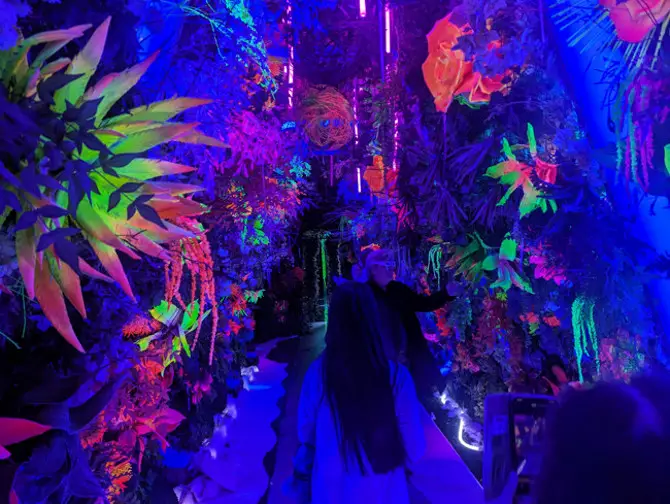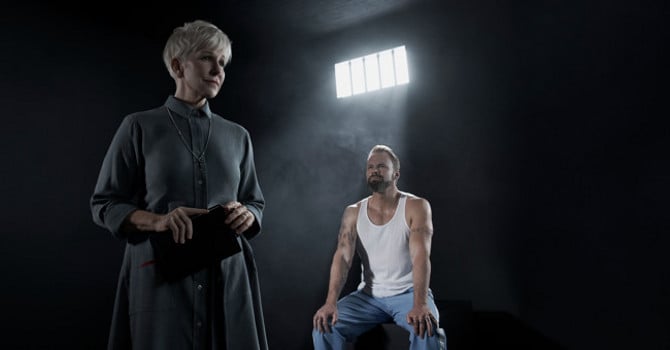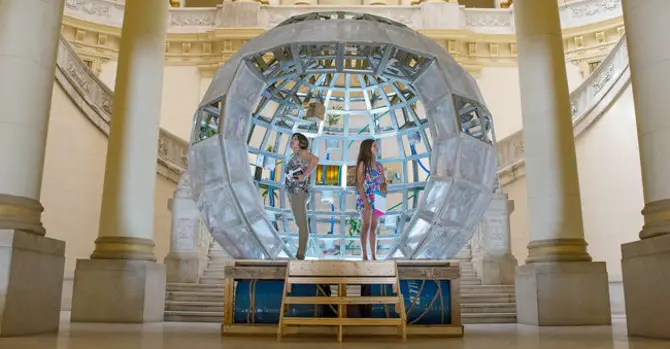The Guggenheim Museum was nearly colored pink. And made of marble, no less. That’s one of the takeaways from Frank Lloyd Wright at 150: Unpacking the Archive at The Museum of Modern Art (through October 1st). The rosy rendition of the museum’s famed rotunda appears in a small but powerfully colorful gouache; there’s also a popsicle orange version. Both are samples of the collection of work-products, carefully kept by Wright (1867-1959) during his long lifetime. But if America’s most famous architect was something of a pack rat, he was a pack rat with a purpose, intent on preserving for posterity his image and ideology. It was MoMA’s acquisition of this oeuvre (co-owned with Columbia University)—55,000 drawings, 300,000 pages of letters, 125,000 photos, and 2,700 manuscripts, along with models, movies, and other memorabilia—that motivated the exhibit, timed to coincide with Wright’s 150th birthday. It’s “an advertisement for the archive,” says MoMA Dept. of Architecture and Design Curator Barry Bergdoll, an organizer of the show.
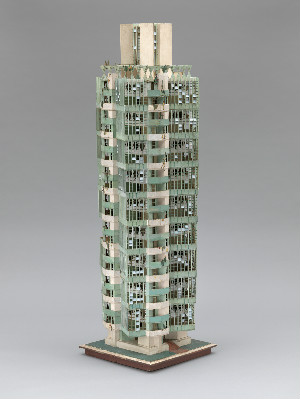
Frank Lloyd Wright (American, 1867–1959). St. Mark’s Tower, New York. Project, 1927–29. Model. The Frank Lloyd Wright Foundation Archives (The Museum of Modern Art | Avery Architectural & Fine Arts Library, Columbia University, New York) © 2017 Frank Lloyd Wright Foundation, Scottsdale, AZ. All rights reserved.
Exhibits celebrating architects have an inherent problem: unlike those shows dedicated to painters or sculptors, they can’t put the actual works on display. Instead, they (and their audiences) are restricted to 2D renderings—drawings, blueprints, photos—and maybe a model or two. Frank Lloyd Wright at 150 offers up approximately 400 such items, many never seen publicly before, ranging from Wright’s greatest hits (the Fallingwater house, the Johnson Wax Administration Building) to lesser-known works (the Gordon Strong Automobile Objective and Planetarium, a spiral forerunner of the Guggenheim) to unrealized efforts, like the Mile-High skyscraper, which may have been more of a public relations device than a serious project. And even though many of them are quite beautiful, facsimiles can fall a little flat after a while.
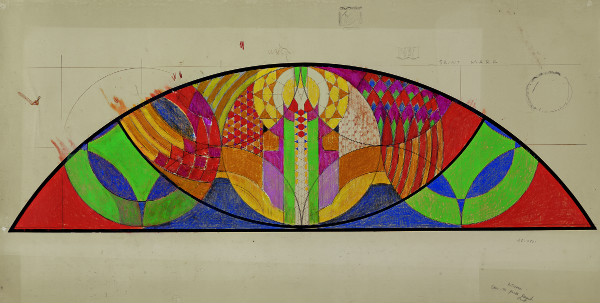
Frank Lloyd Wright (American, 1867–1959). Annunciation Greek Orthodox Church, Wauwatosa, Wisconsin. 1955–61. Stained glass design by Eugene Masselink. The Frank Lloyd Wright Foundation Archives (The Museum of Modern Art | Avery Architectural & Fine Arts Library, Columbia University, New York) © 2017 Frank Lloyd Wright Foundation, Scottsdale, AZ. All rights reserved.
Luckily, MoMA combats any potential monotony with multimedia. Decorative objects add some diversity; particularly delightful are the chairs and china from Tokyo’s Imperial Hotel, a commission Wright worked on from 1913 to 1923, and one of the famed Avery Coonley Playhouse windows (1912), whose geometric, primary colored pattern launched a thousand repros on glasses, umbrellas, postcards, and tote bags. There is a variety of video, including clips from Wright’s TV appearances; the PR master even was a mystery guest on the game show What’s My Line?.
Most prominently—the thematic heart of the exhibit—are the filmed interviews with academics that open each section. These scholars, experts in different decorative arts or cultural affairs fields (though not in Wright’s work), were invited to “unpack” an item from the archive and discuss it. So, for example, you have Ken Oshima, Chair of the Japan Studies Program at the University of Wisconsin, studying the Imperial Hotel material and marveling that Wright’s structure was “neither of the East nor the West…but an international experience.”
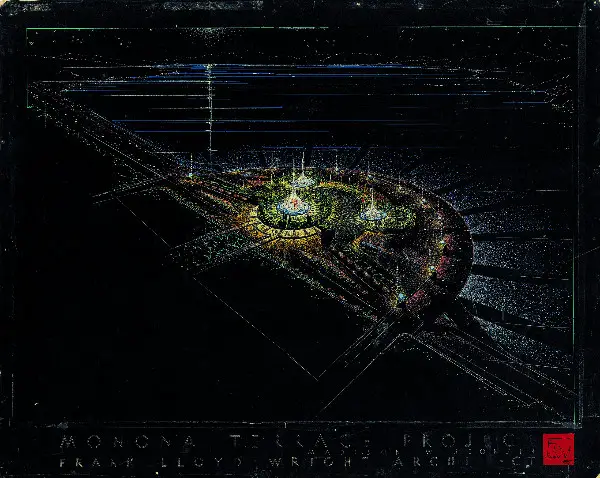
Frank Lloyd Wright (American, 1867–1959). Madison Civic Center (Monona Terrace), Madison, Wisconsin. Project, 1938–59. Night perspective from the west, 1955. Ink and pencil on paper mounted to plywood, 20 x 40″ (81.3 x 101.6 cm). The Frank Lloyd Wright Foundation Archives (The Museum of Modern Art | Avery Architectural & Fine Arts Library, Columbia University, New York) © 2017 Frank Lloyd Wright Foundation, Scottsdale, AZ. All rights reserved.
Frank Lloyd Wright at 150 moves in “vaguely chronological” fashion, to quote curator Bergdoll, but it doesn’t try to be a comprehensive retrospective. Details about Wright’s life and the evolution of his style are scattered among the 13 sections. The best approach is to listen to the filmed interviews, then rummage around to find your own favorites. Perhaps the pastel renderings of stained-glass windows and murals that glow as much as the real thing. Or two complementary depictions of the Madison Civic Center’s Monona Terrace, one a dark drawing of the semi-circular structure glittering in the night; the other a large painted model of it by day, floating above a lake filled with tiny sailboats. Or a painted proposal for a bright-pink museum—familiar yet startlingly new.
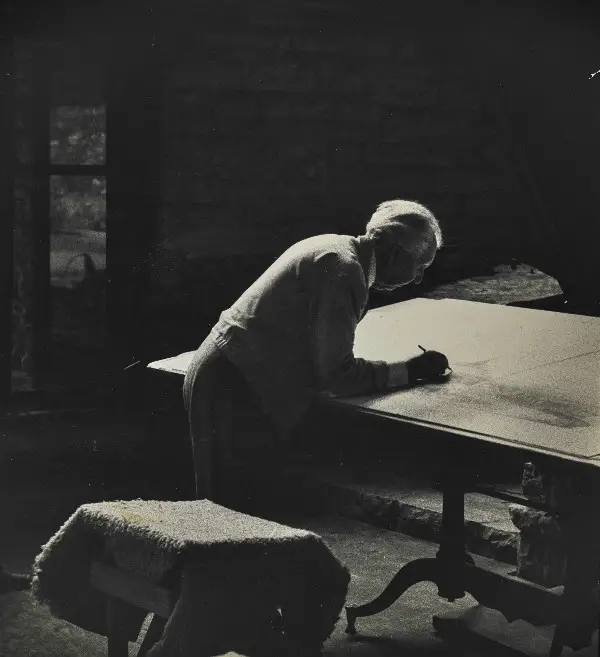
Unknown photographer. Frank Lloyd Wright. n.d. The Frank Lloyd Wright Foundation Archives (The Museum of Modern Art | Avery Architectural & Fine Arts Library, Columbia University, New York) © 2017 Frank Lloyd Wright Foundation, Scottsdale, AZ. All rights reserved.
For more information, visit moma.org.


